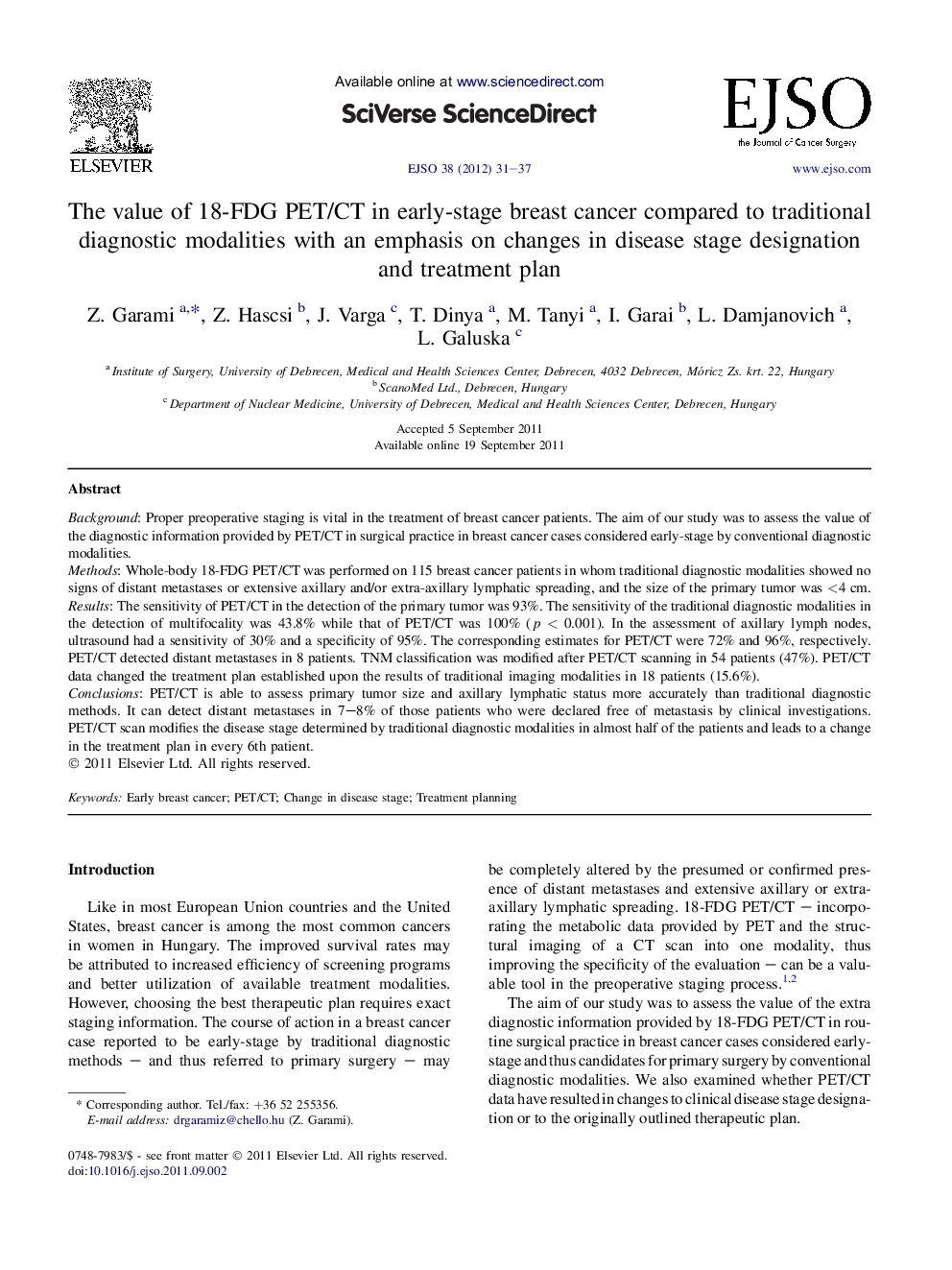| کد مقاله | کد نشریه | سال انتشار | مقاله انگلیسی | نسخه تمام متن |
|---|---|---|---|---|
| 3986510 | 1601418 | 2012 | 7 صفحه PDF | دانلود رایگان |

BackgroundProper preoperative staging is vital in the treatment of breast cancer patients. The aim of our study was to assess the value of the diagnostic information provided by PET/CT in surgical practice in breast cancer cases considered early-stage by conventional diagnostic modalities.MethodsWhole-body 18-FDG PET/CT was performed on 115 breast cancer patients in whom traditional diagnostic modalities showed no signs of distant metastases or extensive axillary and/or extra-axillary lymphatic spreading, and the size of the primary tumor was <4 cm.ResultsThe sensitivity of PET/CT in the detection of the primary tumor was 93%. The sensitivity of the traditional diagnostic modalities in the detection of multifocality was 43.8% while that of PET/CT was 100% (p < 0.001). In the assessment of axillary lymph nodes, ultrasound had a sensitivity of 30% and a specificity of 95%. The corresponding estimates for PET/CT were 72% and 96%, respectively. PET/CT detected distant metastases in 8 patients. TNM classification was modified after PET/CT scanning in 54 patients (47%). PET/CT data changed the treatment plan established upon the results of traditional imaging modalities in 18 patients (15.6%).ConclusionsPET/CT is able to assess primary tumor size and axillary lymphatic status more accurately than traditional diagnostic methods. It can detect distant metastases in 7–8% of those patients who were declared free of metastasis by clinical investigations. PET/CT scan modifies the disease stage determined by traditional diagnostic modalities in almost half of the patients and leads to a change in the treatment plan in every 6th patient.
Journal: European Journal of Surgical Oncology (EJSO) - Volume 38, Issue 1, January 2012, Pages 31–37